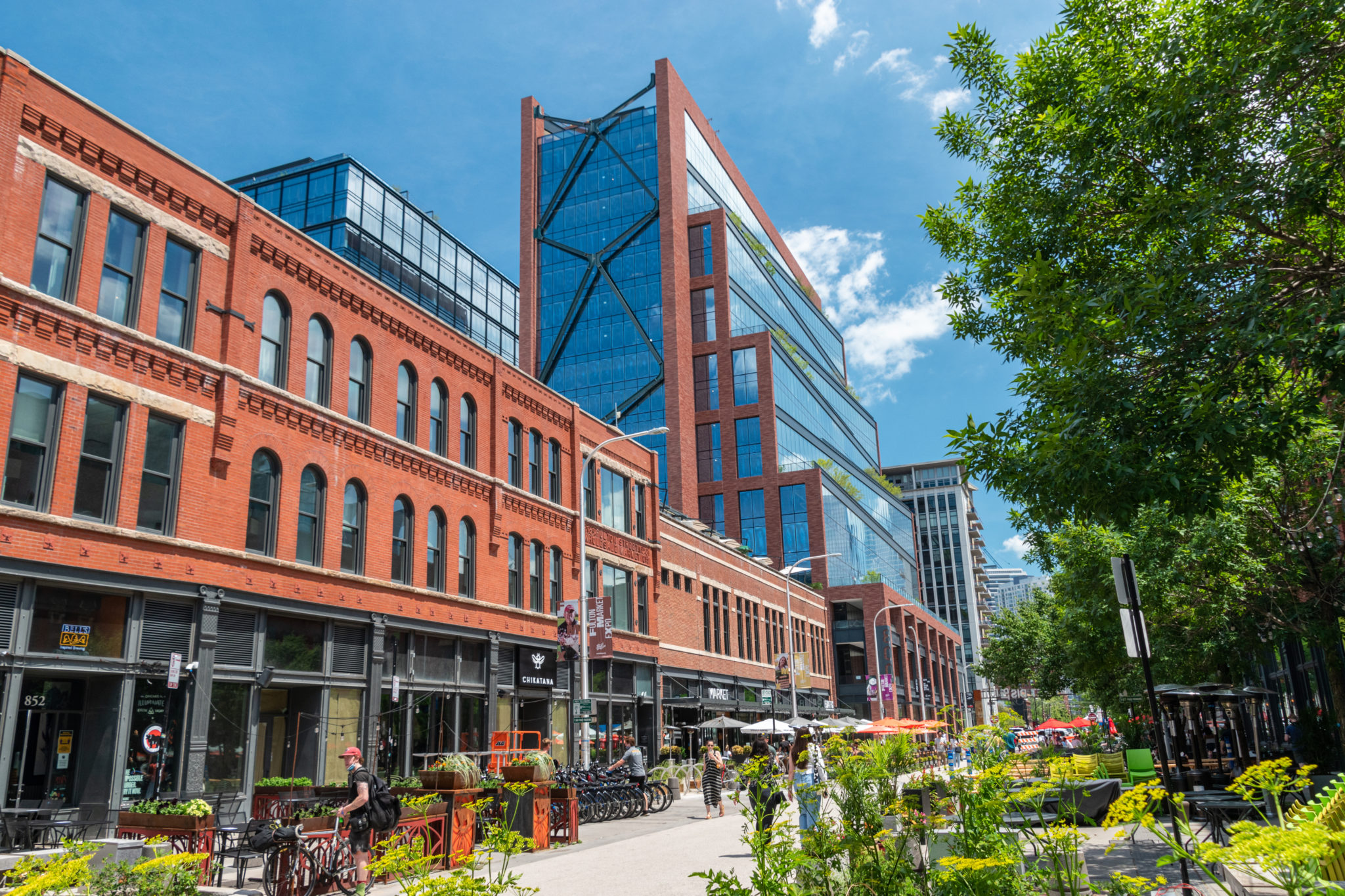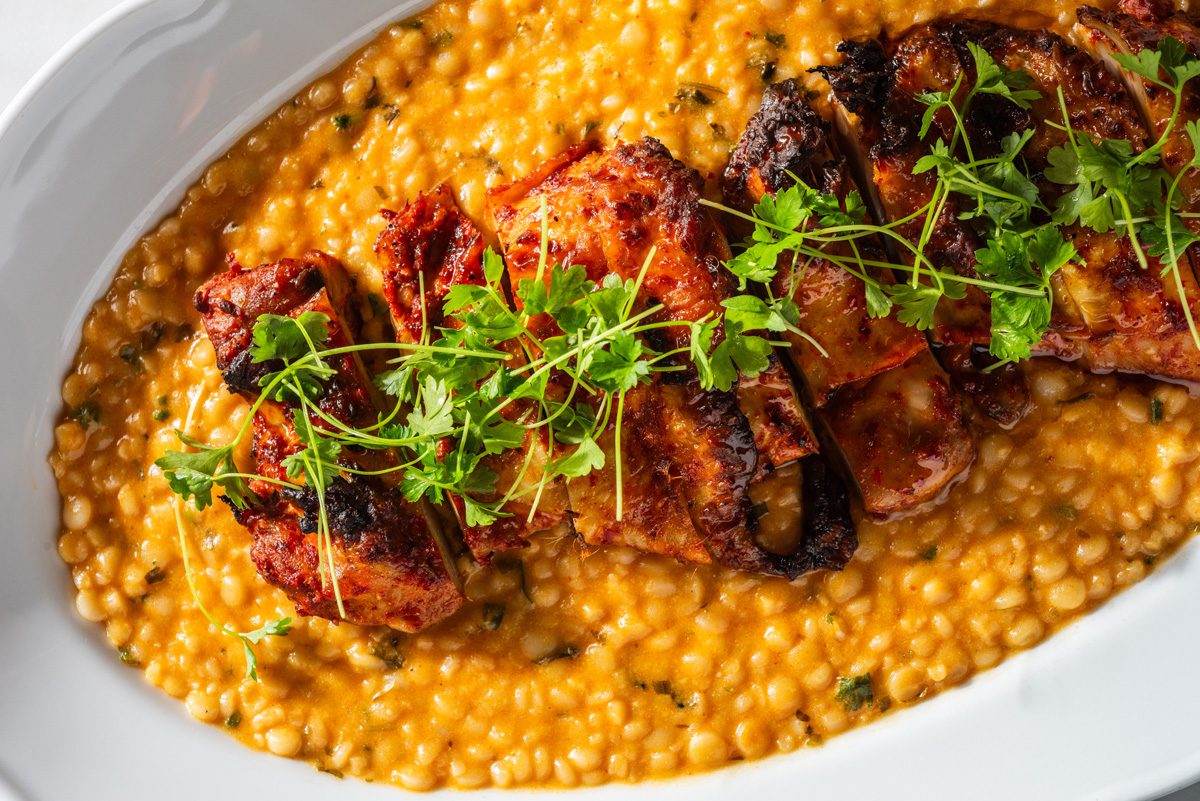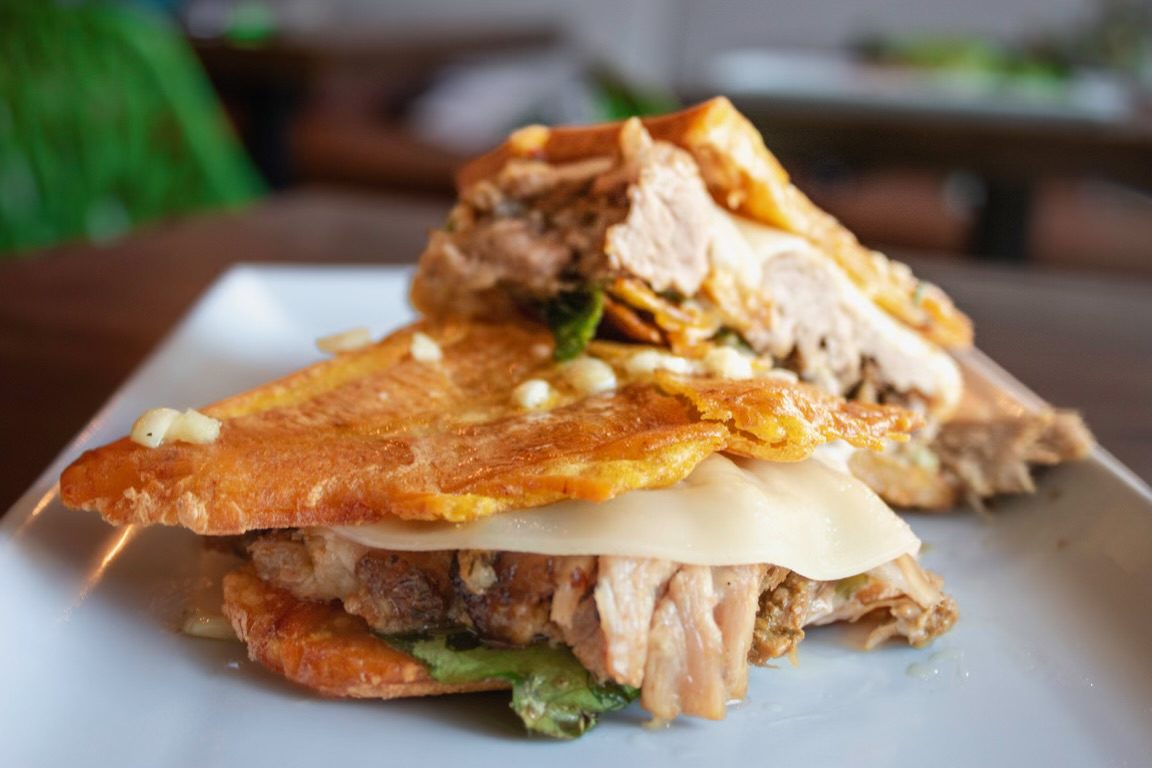
The AIA Guide to Chicago is the most comprehensive resource for discovering Chicago’s
wonderfully diverse architecture, from global icons like the Willis Tower to the houses and
neighborhood buildings that make for rewarding strolls everywhere in the city. These are AIA editor Laurie Petersen’s descriptions of 10 of her favorite places, selected from the almost 2,000 entries in the book.
DuSable (Michigan Avenue) Bridge
Chicago has more moveable bridges than almost any other city in the world. Edward H. Bennett’s design for this 1920 bridge was inspired by a bridge in Paris. Each of four functional operator houses is embellished with sculptural reliefs depicting events in Chicago’s history.
St. Regis Chicago
This sculptural tower by Studio Gang is Chicago’s third-tallest building. Its zigzag profile is formed by stacking truncated pyramid shapes in alternating orientations. Near the top of is a “blow-through” floor to minimize the effects of the wind.
Chicago Cultural Center
Built as the Chicago Public Library in 1897 by Boston architects Shepley, Rutan & Coolidge, this latter-day Renaissance palace has a majestic interior with two must-see spaces: Preston Bradley Hall, with its shimmering mosaics of Tiffany Favrile glass, and the recently restored GAR Rooms. Outside, the Garland Court wall features Kerry James Marshall’s 2017 mural Rushmore, honoring twenty Chicago women.
800 Block of West Fulton Market
Now filled with chic restaurants, the original buildings on this block were built in 1887 for an association of meatpackers. A modern contrast is provided by 800 Fulton, an office building designed by Skidmore, Owings & Merrill that opened in 2021. The expressed structural bracing is appropriate for both the neighborhood and the firm that designed the former John Hancock Building.
Charnley-Persky House
This Gold Coast house was designed in 1891 by Adler & Sullivan when Frank Lloyd Wright was Louis Sullivan’s chief draftsman, so it presents a rare opportunity to see the genius of both architects under one broad roof. Today owned by the Society of Architectural Historians, weekly tours allow visitors to experience the breathtaking atrium at the center of the house.
Marina City
Few Chicago buildings were as innovative in design or impactful on their environment as this Bertrand Goldberg creation, completed in 1967. At that time the area was largely railroads and industrial, so Goldberg created a “city within a city” that included restaurants, shops, a bowling alley, a theater, an office building, and, of course, a marina.
Inland Steel
Designed by Skidmore, Owings & Merrill in 1958, the sleek Inland Steel pioneered the use of stainless steel as a building material. Its design remains unique: it has large column-free floors made possible by placing the elevators and other core services into an adjacent tower.
Marquette Building
This Holabird & Roche building from 1895 is an exemplar of the Chicago style: the rectangular grid of its structural steel skeleton is clearly articulated by its brick-and-terra-cotta cladding. The two-story lobby is sumptuously decorated with Tiffany mosaic scenes of Father Jacques Marquette’s seventeenth-century expedition through Illinois.
Chicago Federal Center Post Office
Ludwig Mies van der Rohe designed the full-block Federal Center to include two high-rises and a single-story post office. The structural steel columns of the post office brace enormous panes of tinted glass. Note that the same stone is used for the plaza and the post office floor, creating a seamless connection between interior and exterior. Alexander Calder’s bright red painted-steel Flamingo is a beautiful foil to the matte black geometries of Mies buildings.
Richter’s Food Products
This Art Deco factory from 1933 – designed by architect H. Peter Henschein whose specialty was meat packing facilities – once produced sausages and processed meats. The elegant entrances are framed in black terra-cotta flecked with gold, which is used again in colorful, geometric designs above the first-floor windows.
Hungry for more?
Chicago Architecture Center’s Open House Chicago is back for a weekend of architectural discoveries and delights. On October 15 and 16, this free public festival provides behind-the-scenes access to significant sites across the city.
About the AIA Guide
The AIA Guide to Chicago is the most comprehensive resource for discovering Chicago’s wonderfully diverse architecture, from global icons like the Willis Tower to the houses and neighborhood buildings that make for rewarding strolls everywhere in the city.


